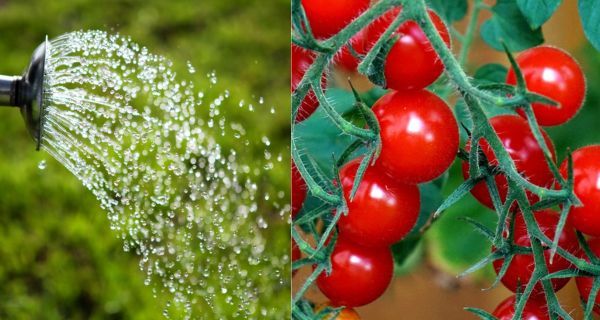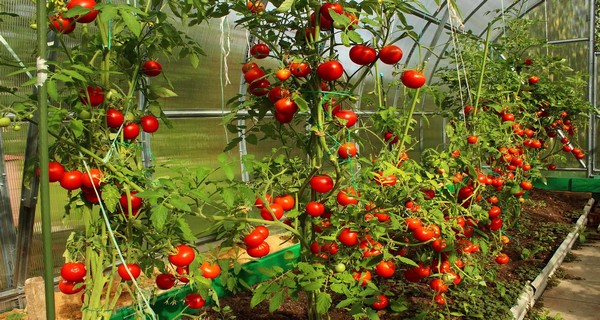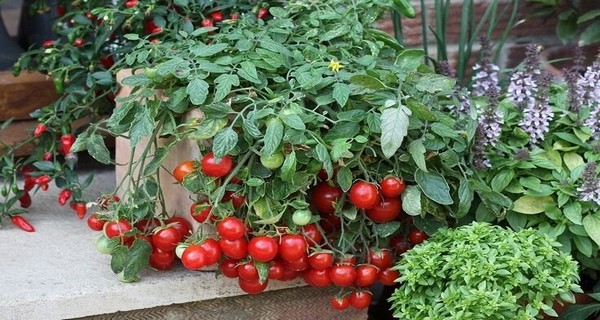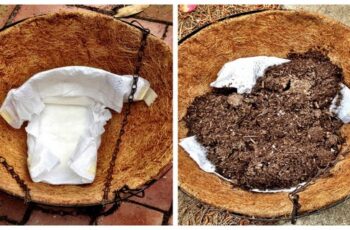Ad Blocker Detected
Our website is made possible by displaying online advertisements to our visitors. Please consider supporting us by disabling your ad blocker.
To achieve a successful tomato harvest, your diligent care plays a crucial role, and acquiring knowledge about the best techniques is essential. You’ll soon discover that maintaining consistent soil moisture is a vital aspect, leading you to ponder how frequently to water the tomatoes in your garden.
Be assured, you’re not alone in seeking answers to this question. While tomatoes are generally regarded as easy to cultivate and maintain, they have specific requirements when it comes to proper watering.

Watering Tomato Plants – How To, How Often & How Much
Insufficient or excessive watering can lead to protests from your plants and manifest signs of potential issues. Thus, it becomes important to determine the appropriate watering frequency for tomato plants.
As a general guideline, tomato plants should be watered either daily or every other day, unless there has been recent rainfall. These plants typically require 1-1.5 inches of water per week. However, if you have container-grown tomato plants, they will need to be watered twice a day.
For optimal results, it is advisable to water your plants early in the morning, before the sun becomes too intense. Keep in mind that establishing a precise rule for watering tomatoes is challenging since it depends on your local weather conditions. Therefore, through trial and error, you’ll gradually discover the right watering routine for your tomato plants.
How Often To Water Tomatoes
Understanding the appropriate watering frequency for tomato plants is a major concern for many gardeners, especially those new to gardening. Like any other plant, tomatoes have specific water requirements that need to be met.
To promote proper growth, it is important to keep the soil around the root system damp, reaching a depth of 6-8 inches. However, it is crucial to distinguish between moist and soggy soil. Excessive moisture can lead to problems like root rot and other diseases, so it’s important to avoid overwatering.
In most regions, watering your tomato plants once a day is generally sufficient. If there has been recent rainfall, you can adjust the frequency to every other day. During periods of high temperatures exceeding 90℉, you might need to increase the frequency to twice a day to ensure the plants receive adequate hydration.
A good approach is to start by watering your tomato plants once a day and observe how they respond. The plants will quickly provide feedback, indicating whether they are receiving too much or too little water. Pay close attention to your plants and their cues to determine their specific watering needs.
How Often To Water Tomatoes In Containers
When it comes to growing tomatoes in containers, there are some differences to consider compared to traditional in-ground gardening, especially in terms of watering requirements. Here are the key points to keep in mind regarding watering your potted tomato plants:
- Ensuring proper drainage is crucial. It is essential to use a container or pot that has an ample number of drainage holes. If your pot lacks sufficient drainage, it is recommended to either find a new pot with proper drainage or create holes using a drill. This step is imperative for the health of your plants.
- It’s important to note that pots cannot retain moisture as effectively as in-ground gardens. Consequently, the soil in containers tends to dry out at a faster rate. You need to be vigilant about watering more frequently to maintain adequate soil moisture.
- Avoid overwatering, as excessive water can wash away essential nutrients through the drainage holes. Strike a balance by providing sufficient moisture without going overboard.
- For potted tomato plants, it is generally recommended to water them twice a day. Ideally, water them once in the morning and once in the evening to ensure consistent hydration.
Signs Of Improper Watering
Tomato plants possess distinct indicators that alert gardeners to potential water-related issues. Being attentive to these symptoms can provide valuable insights and prompt necessary adjustments. Here are the signs to watch out for:
- Diseases, such as root loss and blossom end rot, can occur when there are problems with water management.
- Yellowing leaves can be a result of insufficient or excessive watering, indicating an imbalance in soil moisture.
- Decreased fruit production may indicate that the plants are not receiving adequate water, impacting their reproductive capacity.
- Stunted growth is another potential consequence of water-related issues, hindering the plant’s overall development.
- Reduced resistance to pests and diseases can occur when the plants are under stress due to improper watering.
If you notice that your tomato plants droop during the midday heat, it is usually a normal response to the sun’s intensity. However, if your plants continue to wilt even after sunset, it is a clear indication that the soil is too dry. In such cases, it is advisable to water your plants the following morning rather than at night.
How Much Water Do Tomato Plants Need
The general guideline for watering tomato plants is to provide them with 1-1.5 inches of water per week. However, this measurement in inches can be confusing for many gardeners who are accustomed to different units of measurement. So, let’s break it down to make it more practical.
When we talk about watering recommendations in inches, it essentially means that the plants require 1-1.5 inches of water for every square foot of soil they occupy. To visualize this, imagine a square foot as a 12-inch by 12-inch square. Depending on the size of your tomato plant, there will be multiple square feet surrounding it.
To simplify things, we can convert this measurement into gallons, which is more relatable for most people. It’s good to know that there are 144 cubic inches in a square foot, so you can multiply this by the recommended water depth to calculate the total water requirement in cubic inches.
For example, if you aim to provide 1.5 inches of water, that would be 1.5 inches multiplied by 144 square inches, resulting in 216 cubic inches of water. Converting this to gallons, it comes out to approximately 0.93 gallons.
In practical terms, many gardeners round this up to 1 gallon per square foot. If your tomato plant covers an area of 3-4 square feet, you may need to water it with 3-4 gallons of water per week.
Now, how do you distribute this water over the course of a week? That’s where individual preferences and circumstances come into play. You can take the total water amount needed and divide it by seven days to get an estimate of how much water to provide daily. Remember, it doesn’t have to be an exact science but try to get as close as possible to the recommended weekly amount.
When Is The Best Time Of Day To Water Tomato Plants
Knowing the appropriate timing for watering your tomato plants is a crucial aspect of their care. The optimal time to water your tomato plants is early in the morning. This timing is advantageous for several reasons:
Watering in the morning allows the plant to efficiently utilize the water before the intense heat of the day sets in. By providing water in the morning, you give the plant enough time to absorb and distribute the water to its leaves before the primary heat stress occurs.
Additionally, watering in the morning helps prevent leaf burn. If you water your plants in the middle of the day when the sun is at its peak, the water droplets sitting on the leaves can act as magnifying lenses and intensify the sun’s rays, potentially causing damage or burns to the leaves.
By watering in the morning, you align with the plant’s natural biological functions. Plants typically initiate the process of photosynthesis in the morning, usually at a consistent time each day. Providing fresh water to the plant during this time ensures that it has ample moisture available for absorption during this critical phase.
Conversely, it is advisable to avoid watering in the evenings as much as possible. Watering late in the day can leave the foliage damp overnight, increasing the risk of fungal diseases and other moisture-related issues.



